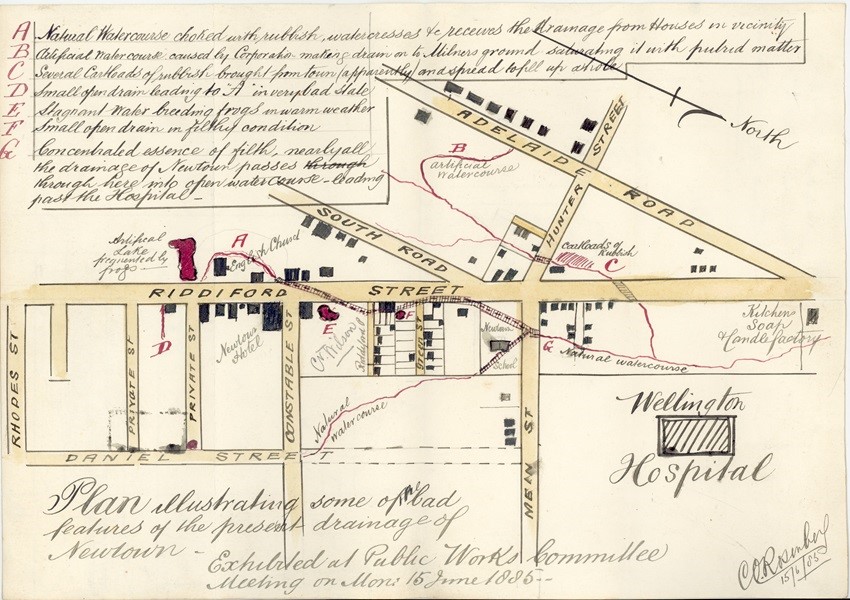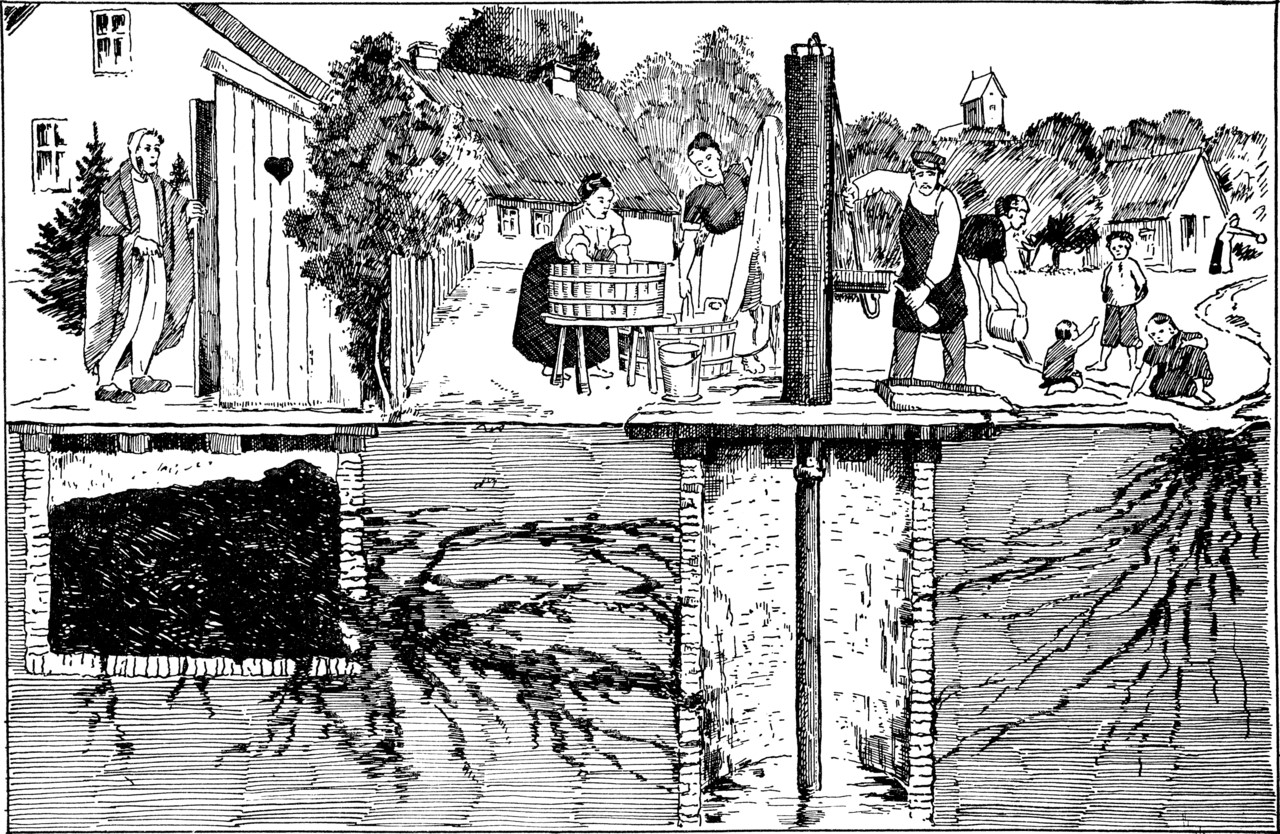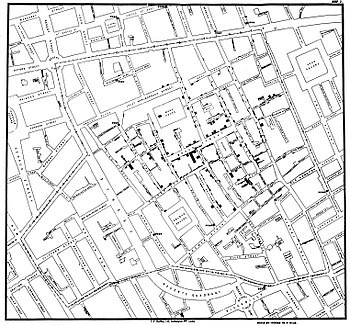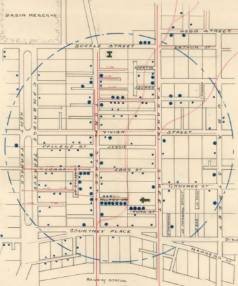
John Snow did in fact know something.
By Sofia Roberts, Museums Wellington intern
At Nairn Street Cottage the outhouse is located at the back of the garden – next to the coop of heritage chickens. Beside the toilet is a rangiora plant – also known as ‘bushman’s friend’. The wide flat leaves served many purposes including makeshift toilet paper. In 1858 when the Wallis family started living in the Cottage they probably would have had a long drop-like toilet with a can in it – this would have used both on its own and to empty chamber pots into. This waste (politely referred to as ‘nightsoil’) would have then been collected and disposed of.

Nairn Street Cottage garden including outhouse. Photo credit: https://www.bookme.co.nz/things-to-do/wellington-wairarapa/activity/museums-wellington-nairn-street-cottage/2708
But it’s this last point – disposal – that brings us to the major problem faced by nineteenth century Wellington. Waste disposal wasn’t done for free, and many Wellingtonians preferred simply dumping the waste themselves. In his recent book ‘A Strange Beautiful Excitement: Katherine Mansfield’s Wellington 1888 – 1903’, Redmer Yska describes the gully that ran behind Tinakori Road (now the motorway) and how it was a favoured spot for refuse dumping.
Katherine herself described how the ‘strong stench of fennel and decayed refuse streamed from the gully’. There was sewage that ran through Te Aro with the idea that the waste would move through the city and down into the harbour. However when it rained the waste was washed throughout the city – often there was little movement so the waste sat stagnant.
In 1889 there was a court led investigation into the water quality in CBD Wellington. The Evening Post reported on this writing about the ‘exceedingly offensive’ drains running through Dixon Street and Taranaki Place [sic] that drained sewage from private properties. This was affecting the water quality from Polhill Stream: ‘the water commenced to foul about 1863, and it became worse every year. Two years before that year the pollution became perceptible.’
This problem of ill-disposed sewage began to cause serious problems as it infected the water supply and caused disease. Wellington City Council cites ‘sewage soaked backyards’ as causing 77 deaths in 1890 – from cholera, typhoid, polio and dysentery.

Plan illustrating some of the bad features of the current drainage of Newtown, 1885. https://wellington.govt.nz/about-wellington/history/history-of-wellington/1890-1918
Yska describes the Hector family in Hill Street in Thorndon attempting to cope with the foul water by ‘fixing a piece of flannel over the mouth of the kitchen tap, removing it every evening when it contained a teaspoon of filth that gave off a terrible stench as it decomposed.’ The father and son of the household caught typhoid and two members of the neighbouring household died of it.
According to Te Ara, an 1870 study showed that none of the water collected from wells or tanks in crowded parts of the city was safe to drink and all town streams were too polluted to use.
In 1879 there were 75 deaths in Wellington from typhoid, diphtheria, scarlet fever, measles and cholera – mostly in the central Te Aro area. Unfortunately for the Wallis family at Nairn Street Cottage, baby Amy Mabel was one of these – dying of (probably typhoid) on Christmas Eve 1878.
This was hardly a problem unique to Wellington – communities in England were having the same struggle of sewage polluted water and related deaths. In 1854 London had a similar cholera outbreak in Soho. This saw 616 people die and three quarters of the residents of the area flee.
This outbreak led to medical advancements by a physician named John Snow who tracked the outbreak to a well which was later found to have been infected with fecal matter. The incident was one of many that led to a shift from miasma theory (air particles causing disease) to germ theory (germs causing disease).
Unfortunately both the Broad Street and Te Aro disease outbreaks were slow to change the status quo. Despite the Broad Street pump being replaced, leading to a decline in deaths, John Snow’s theories were dismissed immediately afterwards. Likewise, despite Wellingtonians being victims to cholera and typhoid, they were reluctant to change the sewage system once they learnt the cost – the equivalent of $31 million. However , in 1874 the development of cast iron pipes and flushing toilets started.
But Wellington still had to wait for safe and hygienic disposal of its waste – it wasn’t until 1899 that the first public sewerage system was completed. This saw the construction of:
- a sewerage network in the areas around the harbour
- a sea outfall at Moa Point
- a sewerage tunnel through Mount Victoria
- overflows created by transforming some existing timber stormwater culverts into brick or concrete.
Reporting back soon after, the Resident Engineer highlighted the substantial decrease in sewage-related diseases being treated at Wellington Hospital since the introduction of the new sewerage scheme. How lucky we are that we no longer have to drink water contaminated by sewage!



